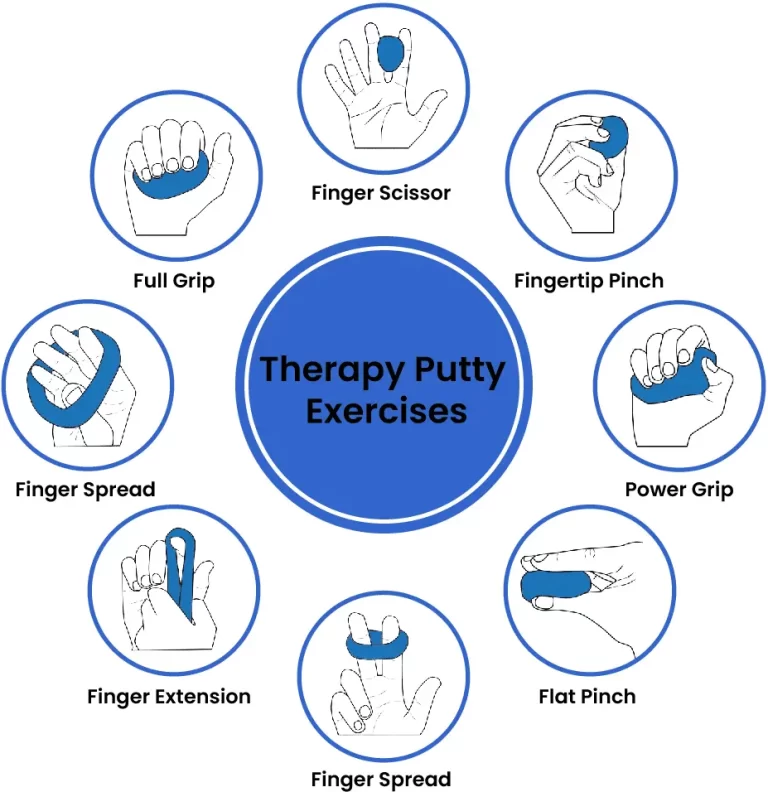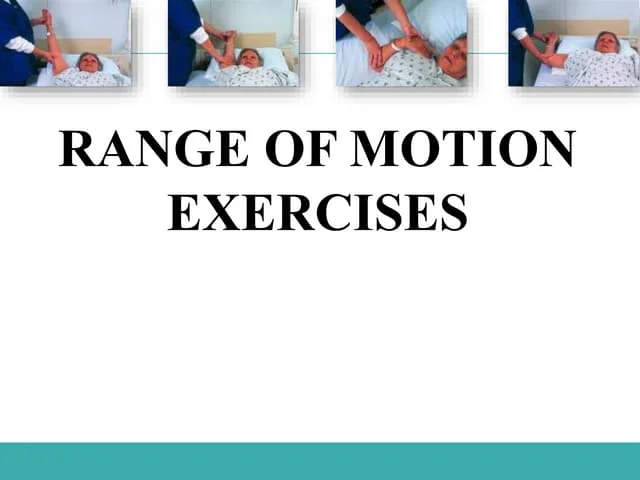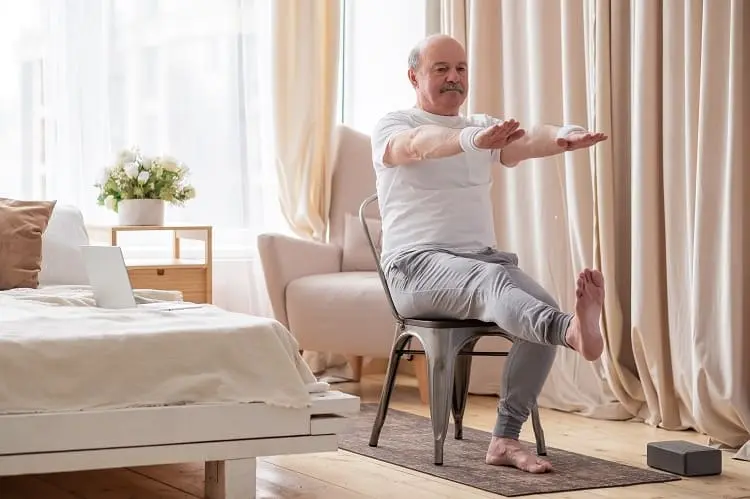13 Best Exercises for Tennis Elbow
Along with painkillers, braces, and applying heat or cold packs, exercise plays a significant role in the whole tennis elbow therapy program.
Exercises for Tennis Elbow promote long-term rehabilitation and restore full muscular function. It is the most normal method of healing that helps in resuming all daily activities that were painful before, including sports.
Introduction:
Another name for tennis elbow is lateral epicondylitis. It happens when someone sprains their forearm tendons. Tennis elbow is typically treated at home with rest and over-the-counter medicine. Specific exercises can also reduce pain and prevent it from coming again.
Reducing inflammation and giving the inflamed muscles and tendons some rest are the initial stages of treating tennis elbow. Compression and ice can be useful. After that, you can start doing mild activities to build muscle and stop the problem from happening again.
You should follow your doctor’s instructions to make sure that this exercise routine is safe and beneficial for you. The exercises that can help you reach your rehabilitation goals should be discussed with your physician or physical therapist.
Causes:
Elbow pain most commonly results from tennis elbow. Although it can affect anyone at any age, most cases occur in those between the ages of 30 and 60.
Usually, tennis elbow develops gradually. Repetitive movements, such as holding a tennis racket while swinging, can put stress on your muscles and leave your tendons to handle the task, which may result in inflammation and small tears in the tendons.
Activities or occupations requiring frequent arm movements include;
- Tennis
- Typing
- Painting
- Weight lifting
What signs and symptoms characterize tennis elbow?
If tennis elbow is present, you may feel some of the following symptoms;
- Elbow ache that starts mildly and grows worse over time
- Pain that radiates to the wrist, forearm, and outside of the elbow a weak grip
- Additional pain when gripping something or shaking hands
- Difficulty when utilizing tools, opening jars, or lifting objects
Benefits of Exercises for Tennis Elbow:
- Helps with improving arm strength.
- Improve your range of motion.
- Strengthens the muscles that surround the hand joint, increasing stability.
- In addition to its positive effects on physical health, exercise also has mental health advantages. Managing chronic pain can have a negative emotional impact. Natural mood boosters and pain relievers, endorphins are released following physical activity.
- Improve flexibility.
Exercise For Tennis Elbow:
Tennis elbow can be healed using the following exercises;
Wrist turn
- Extend your hand with little to no weight on it while bending your elbow at a straight angle.
- Turn your wrist just a little so that your palm is facing down.
- Hold for a few seconds.
- Then return to your neutral position.
- Then relax.
- Do this exercise five to ten times.
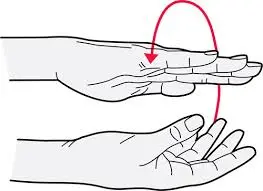
Towel Twist
- Grasp a loosely rolled towel by its length and grasp either end with one hand.
- Keep your shoulders relaxed.
- The towel can be twisted in various ways using your hands, much like you would to remove water.
- Continue this way for a few seconds.
- Then return to your neutral position.
- Then relax.
- Repeat five to ten times while turning the towel in the other direction.
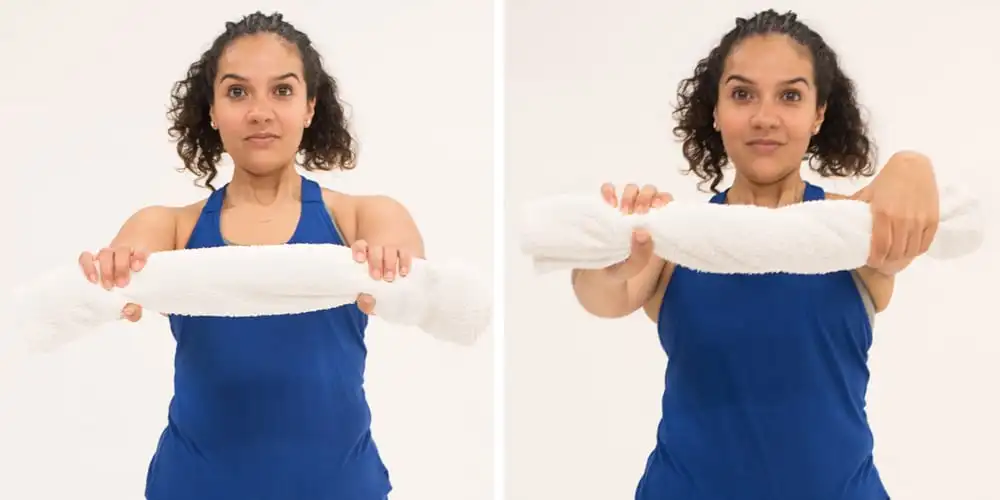
Towel crush
- To start, place your forearm on the table.
- Either standing or sitting is an option.
- Rolling or forming the towel into a ball should be done with your hand.
- Squeeze the towel and hold it in place for a short while until you’re ready.
- Then return to your neutral position.
- Then relax.
- Do this exercise five to ten times.
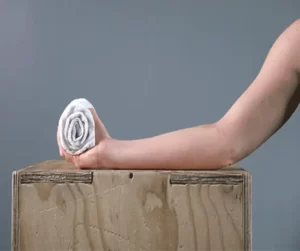
Elbow bend
- Breathe deeply a few times and find a comfortable place to stand.
- Raise your arm until it reaches your shoulder, bending it gradually.
- Hold this pose for a few seconds.
- Lower your arm.
- Then return to your neutral position.
- Then relax.
- Do this exercise five to ten times.
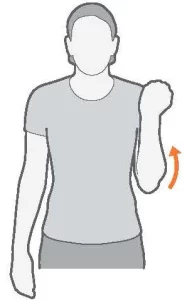
Wrist flexion
- To perform this exercise, take a seat in a chair and place your elbow on the table while holding an upright 2-pound dumbbell in your hand.
- Bend your wrist by extending it inward toward your body while keeping your palm facing upward.
- If this physical activity is too hard for you, do it without any weight.
- Hold this position for a few seconds.
- Then return to your neutral position.
- Then relax.
- Do this exercise five to ten times.
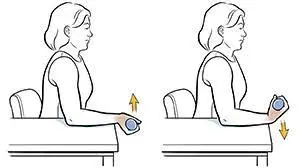
Ball squeeze
- Form a fist with your fingers around a tennis ball, sock, or rolled-up towel that you have in your hand.
- Hold onto it tightly for a brief period of time.
- Then return to your neutral position.
- Then relax.
- Repeat this exercise five to ten times.
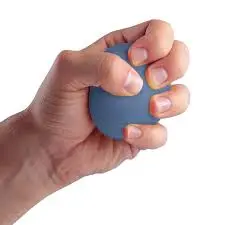
Wrist extension
- You must hold a two-pound dumbbell straight in your hand, rest your elbow on the table, and perform this exercise while seated in a chair.
- Your wrist needs to be bent away from your body and pointed downward in order to be straightened.
- If this exercise is too hard for you, do it without any weight.
- Hold this position for a few seconds.
- Then return to your neutral position.
- Then relax.
- Do this exercise five to ten times.
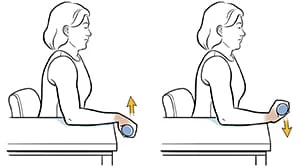
Finger Stretch
- Tie an elastic band around your fingers.
- Start by exerting pressure on your thumbs and fingertips.
- As you pull your fingers away from your thumb, the band will become tighter.
- Your fingers should be spread apart while staying near to one another.
- You ought to be able to feel the elastic stretch a little bit as you work.
- Then return to your neutral position.
- Then relax.
- Do this exercise five to ten times.

Wrist flexor stretch
- Put one arm out in front of you when standing, elbow in a straight line palm facing the floor.
- With your other hand, gently bring the palm of your outstretched hand as close to you as feels comfortable so that you can point your fingers toward the ceiling.
- As you perform this stretch, let your fingers flex and relax.
- Hold this position for a few seconds.
- Then return to your neutral position.
- Then relax.
- Do this exercise five to ten times.
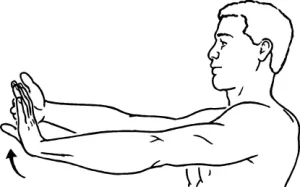
Wrist extensor stretch
- With your palm facing down, extend your left arm straight in front of you.
- With your right hand, grasp the left hand, then progressively bend it down until your left forearm extends.
- Hold this position for a few seconds.
- Then return to your neutral position.
- Then relax.
- Do this exercise five to ten times.
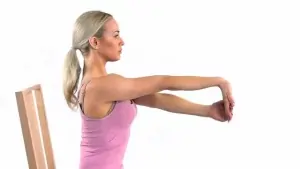
Empty Handshakes
- Start by setting the table with your forearm on it.
- You have the choice of sitting or standing position.
- You should be hanging by your wrist and hand off the table.
- As though extending your hand to shake someone’s, turn it to the side.
- This is the initial position.
- Make chopping motions with your hand as you move it up and down to finish the exercise.
- Both the top and bottom of the movement should be held.
- Then return to your neutral position.
- Then relax.
- Do this exercise five to ten times.
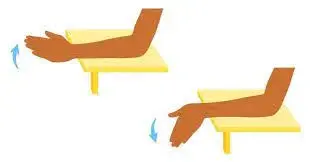
Forearm Supination and Pronation
- Start by pointing your palm sideways.
- Gently turn the palm palm up.
- Place your wrist on your thigh and bend your elbow to a 90-degree angle to support your forearm.
- Raise your elbow to a fairly straight posture.
- Continue to place your arm on your thigh.
- The palm should be softly rotated downward after being gently taken back to the starting position.
- Then relax.
- Do this exercise five to ten times.

Elbow Curls
- Initially, settle into a seated position on the chair.
- With your palm facing up, hold the other end of the band while looping one end of a resistance band beneath your foot.
- Lift the band and bend your arm in the direction of your shoulder joint.
- Hold this position for a few seconds.
- Then return to your neutral position.
- Then relax.
- Do this exercise five to ten times.

Safety measures to follow when exercising:
It is best to begin elbow pain exercises only after consulting a physician or physical therapist. You must carry out safe, effective exercises that take into account your specific situation.
- Before practicing exercise, warm up and stretch.
- It is important to perform all exercises per the protocol, which specifies the right number of repetitions for each exercise as well as stretches before and holds in between.
- Dress comfortably so that your body may move easily while working out; avoid wearing anything too tight.
- Stretching the tense muscle is safe, even if it hurts. However, as you stretch, you shouldn’t experience any intense or piercing pain.
- Between exercise sessions, give yourself a rest.
When did you stop working out?
- If rest has been recommended by your physician.
- If you recently suffered an injury to one of your upper limbs.
- If performing this exercise causes you any pain.
- Fever
Prevention:
Avoid using your elbow excessively as much as you can.
Generally:
- Verify the strength and flexibility of your arms.
- Stay away from wrist and arm repetitions.
- To relieve the pressure on your elbow, use your upper arms and shoulder.
- Avoid bending or straightening your arm entirely.
At the office:
- Avoid using a twisted wrist when working. If you can, keep things simple.
- Consult with your supervisor about ways to lessen stress, such as switching tasks, rotating jobs, or altering the setup of your desk.
- To relieve hand strain, use a softer grip when using tools.
- To lessen the shock, use a hammer that has padding if you plan to use one.
In terms of sports:
- Before engaging in any sport or activity that involves an arm or elbow workout, warm up and stretch.
- Request form help from your coach if you have one. An injury can be prevented with the right approach.
- Make sure the tennis balls you have are dry and new. Your elbow may become aggravated by wet or “extinct” tennis balls.
- Particularly when playing tennis and golf, wear equipment correct for your height and weight.
- After engaging in sports that require your forearms, ice your elbow.
Which exercises should you avoid doing if you want to prevent the worsening of your tennis elbow?
The majority of the time, therapists will recommend mild therapeutic exercises for tennis elbow. The forearm muscles and elbow ligaments damaged by this injury can also be strengthened and stretched with your help. When working with patients who have tennis elbow, physical therapists usually avoid specific types of exercise.
- Weight-bearing exercises performed repeatedly
Many exercises require you to move your arms while holding up the majority of your body weight. The push-up position is For those who suffer from tennis elbow, these exercises are very stressful on the affected elbow. This strain could make your elbow worse or perhaps cause your recovery process to go more slowly.
- Workouts for the wrists with heavy weights
Wrist exercises are a common component of physical therapists’ tennis elbow treatment regimens. However, they suggest doing the exercises with little or no weight. Even though you may be used to performing heavy-weight workouts like barbell extensions, you should refrain from doing them while you’re recovering. If you don’t, you might need more time than you imagined to heal.
When to consult the doctor:
Most people can treat the pain and inflammation caused on by a tennis elbow by resting and using over-the-counter medications. If the pain is severe or doesn’t go away after two weeks, they should see a doctor.
Tennis elbow may cause some persons to experience difficulties with their daily activities. A physician might suggest physical or occupational therapy in such situations. A specialist may provide therapies and exercises to help with pain management and movement improvement.
A supporting clasp or brace may also be suggested by a physician or therapist. If a person’s job requires repetitive motions, this can lessen the strain on their elbow.
Summary:
Your elbow and arm may hurt if you have tennis elbow, a kind of tendinitis. The reason behind it is that as you repeatedly move your arms, the muscles in your forearm become fatigued and the tendons take over. Athletes are not the only people who can suffer from tennis elbow.
It is usually treated with physical therapy, though in some cases, surgery might be necessary.
FAQ:
How can people determine whether they have tennis elbow?
Tennis elbow is characterized by relatively obvious symptoms, such as pain that travels from the elbow’s outside to the wrist. You won’t feel comfortable bending, twisting, or gripping small objects.
What is the reason behind tennis elbow pain?
Performing repetitive arm motions is the most frequent reason. Your forearm muscles tire out from repetitive actions, which leaves the tendons to take up the pace and swell.
Will exercising help to relieve tennis elbow?
After you’ve rested and settled your tennis elbow, exercising is the most effective way to promote recovery.
Would stretches be beneficial for tennis elbow?
Tennis elbow usually goes away on its own in a year or less with no specific treatment. Stretching and strengthening activities can help people try to get rid of them sooner.
With a tennis elbow, how can people sleep?
A lot of people lie down on their sides and rest all night. The tennis elbow may get worse in this position because it limits blood flow to the injured tendons. Resting on your back allows for faster healing while you sleep and relieves pressure on your arm.
How much of a serious problem is tennis elbow?
Tennis elbow is treatable with anti-inflammatory medication, rest, ice, stretching, and strengthening exercises, and it usually resolves without serious side effects.
In tennis elbow, which method is preferable heat or ice?
Ice relieves pain and swelling as soon as tendon damage occurs. You should ice the area for 10–20 minutes every 3-6 hours. Carefully place a towel or other item of cloth between your skin and the ice pack. When treating persistent tendon irritation also known as tendinopathy or tendinosis heat therapy may be more beneficial.
Does physical therapy work well for elbow tennis?
Physical therapy plays a major role in the complete treatment of tennis elbow, a common overuse injury affecting the tendons of the elbow. Various techniques have been employed to deal with the signs and promote recovery.
If tennis elbow is not treated, what would happen?
Tendinitis is one type of tennis elbow. If you don’t get treatment for your problem, it can develop into tendinosis, a degenerative disease that puts your tendon at risk of rupturing.
Should I stop lifting weights because I have tennis elbow?
Frequent lifts or motions performed repeatedly: Exercises that include lifting weights repeatedly or moving your wrist and elbow joints repeatedly can aggravate your injury. Try to limit the number of repetitions you perform when working out in this manner.
Which factors put one at risk for tennis elbow?
Tennis elbow can result from activities that require you to hold something while continuously twisting your wrist and forearm. Tennis elbow can result from a variety of computer-related activities, including typing and mouse use. manual labor-intensive jobs like sewing or screwdriver work.
References:
- March 17, 2023b; Cadman, B. There are eight tennis elbow exercises. When to See a Physician: https://www.medicalnewstoday.com/articles/322746#
- The Very Best Eleven Painless Tennis Elbow Exercises [PDF]. August 18, 2023. Doctor Sporty. stretches and exercises for the tennis elbow at https://sportydoctor.com
- Lateral Epicondylitis, or tennis elbow. October 11, 2023. WebMD. https://www.webmd.com/fitness-exercise/lateral epicondylitis in tennis elbow
- OrthoInfo – AAOS – Therapeutic Exercise Program for Epicondylitis (n.d.). Orthoinfo.aaos.org/en/recovery/therapeutic-exercise-program-for-epicondylitis
- Image 3, On November 28, 2023, Biswas, C. This is a step-by-step guide to 15 tennis elbow physical therapy exercises. STYLECRAZE. https://www.stylecraze.com/articles/tennis-elbow-exercises/
- Image 11, Clinical Vastral Physiotherapy. October 24, 2023. muscles of the extensor carpi radialis brevis. Mobility Physiotherapy Center. https://mobilephysiotherapyclinic.net/brevis-muscle-extensor-carpi-radialis/
- Image 13, Arms – Seated Biceps Curls with Short Resistance Band – FIT CARROTS | Premium Fitness Tools For Functional and Regeneration Training. (November 23, 2019). Fit Cartrons: Premium Workout Gear for Regeneration and Effective Training. Using a short resistance band, curls are performed while sitting with your arms raised.



